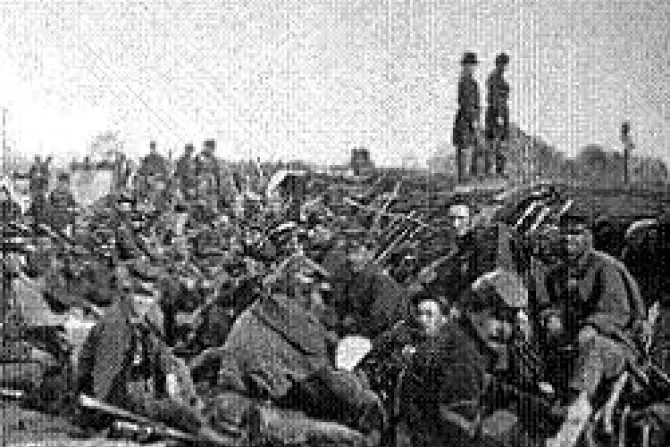A variety of Catholics came to prominence within the Church and in American public life.
Orestes Brownson was a “very important Catholic intellectual” in the 1850s. He was also a “late Catholic” who held many religious and philosophical positions before his conversion.
Archbishop John Hughes of New York was very important among the Irish population and went on a recruiting trip to Europe on behalf of the Lincoln administration. He was perhaps the leading Catholic figure of the United States and he supported the Union, but he took a “conservative” position on slavery.
James McMaster, the “most conservative” Catholic spokesman in Rable’s view, was “bitterly anti-Lincoln and anti-war.”
He edited the Freeman’s Journal newspaper in New York. At one point he was arrested and his newspaper was suspended because of his attacks on President Lincoln.
Bishop William Henry Elder of Natchez, Miss. ran afoul of federal military authority when he refused to tell his priests to pray during Mass for the U.S. president, rather than the Confederate president.
General William Rosencrans, a Union commander in the war’s western theater, had mixed success in battle. He was a “very ardent Catholic” who ensured that Mass was held on a regular basis in his camp.
“Rosecrans liked to stay up late discussing theological questions, including with a future president of the United States, James Garfield,” Rable said. “Garfield was an ordained Disciples of Christ minster and he and Rosecrans would talk long into the night about theological questions.”
The shortage of Catholic chaplains was always an issue. Though they sometimes had tension with Protestant chaplains, there were also examples of cooperation.
“One of the things the war did, especially in the armies, was that it lessened the importance of denominational differences. Some thought that it lessened anti-Catholicism among Protestants,” Rable explained.
Religious women also had a part. The Sisters of Charity worked in the military hospitals and cared for everyone regardless of their political affiliation.
(Story continues below)
Subscribe to our daily newsletter
“They were there to serve as nurses. Soldiers on both sides were impressed with the Sisters of Charity,” added Rable, whose book recounts the story of one soldier so impressed by a sister that he converted to Catholicism.
Though the armies had a reputation for irreligion, there were also religious revivals during the war in both armies, especially the Confederate camps.
“I would argue that a substantial minority of soldiers in both armies were deeply religious. And I wouldn’t go beyond that. I don’t think you can argue that a majority were deeply religious at all,” Rable said.
Some traditional histories of the Civil War say that the conflict caused a great deal of religious disillusionment among Americans, but Rable found little evidence to support that claim.
“For one thing, they could use their faith to explain what was going on in the war. If you lost a battle, that was a sign of divine chastisement. If you won a battle, that was a sign of divine favor. The theology was pretty flexible.”
Americans at the time also held to a “civil religion,” an informal and commonly held set of beliefs that emphasized their nation as a chosen people with a special destiny.




